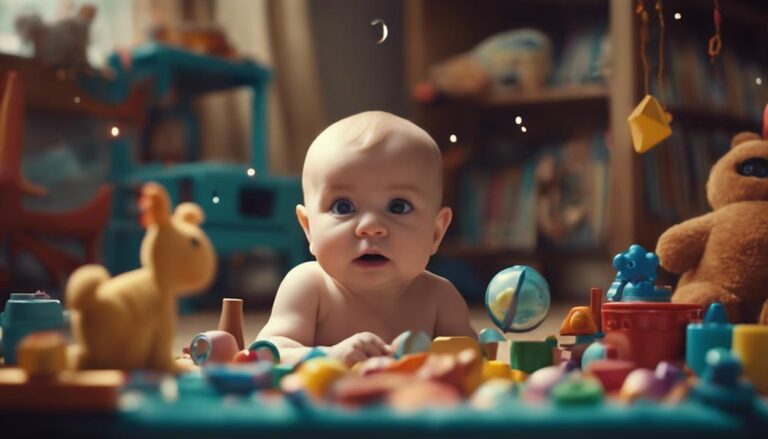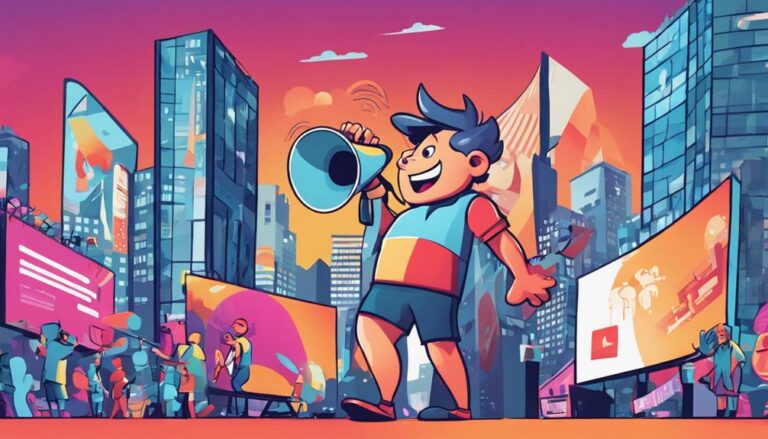Unlocking Secrets: Pro Editing Techniques Revealed
As you refine your editing skills, unlock the secrets to a more engaging film by mastering techniques like visual storytelling, effective pacing, and emotional resonance. Use symmetry and negative space to create a sense of balance, and leading lines to guide the viewer's eye to your subjects. Apply color correction techniques to enhance the mood, and strategically place sound effects to create an immersive experience. By controlling the rhythm of your scenes and experimenting with different transitions, you'll create a captivating narrative that draws your audience in. Mastering these techniques will be just the beginning of your journey to creating exceptional visuals.
Key Takeaways
- Editing for pacing requires consideration of the emotional impact of each scene to create a harmonious visual narrative.
- Effective dynamic range control allows key sound effects to pop while maintaining a clear and balanced overall audio level.
- Advanced color correction techniques fine-tune the image's hue, saturation, and luminance to create a specific mood or atmosphere.
- Seamless scene transitions require a thoughtful approach to visual continuity, ensuring the placement of actors, props, and camera angles aligns.
- Visual hierarchy and balance can be achieved by using framing elements, leading lines, and symmetry to draw attention to key elements.
Mastering the Art of Pacing
Mastering the Art of Pacing
When editing a scene, you're not just trimming fat or rearranging words – you're crafting the rhythm that draws your audience in and keeps them engaged.
To achieve this, you'll need to carefully consider pacing, which refers to the speed at which events unfold in your scene.
Effective pacing creates emotional resonance by allowing your audience to absorb and process key events.
Time compression is a powerful tool in pacing.
By condensing or expanding time, you can heighten tension, emphasize important moments, or create a sense of realism.
For example, a rapid-fire sequence of shots can convey chaos and urgency, while a slow-motion sequence can emphasize the significance of a particular event.
When editing for pacing, consider the emotional impact of each scene.
Ask yourself: What's the primary emotion I want to evoke?
How can I use pacing to amplify this emotion?
Effective Use of Transitions
When you're editing a scene, a well-executed transition can make all the difference in maintaining the viewer's engagement.
Seamless scene transitions require a thoughtful approach to visual continuity, ensuring that the placement of actors, props, and camera angles aligns from one shot to the next.
Seamless Scene Transitions
To create seamless scene transitions, you need to consider the visual flow of your edit, as a well-executed transition can make or break the pacing of your narrative.
A key aspect of this is scene bridging, where you use visual elements to connect two scenes and create a smooth transition.
When mapping out your transitions, consider the following:
- Match the tone and mood of the two scenes to ensure a cohesive visual flow
- Use consistency in your editing style to create a sense of continuity
- Consider the 180-degree rule to maintain spatial relationships between characters and objects
- Pay attention to the color palette and lighting to create a seamless visual bridge between scenes
Effective transition mapping is crucial in creating a seamless scene transition.
By taking the time to plan and execute your transitions carefully, you can elevate the overall visual flow of your edit and keep your audience engaged.
This attention to detail can make a significant difference in the pacing and overall impact of your narrative.
Smooth Audio Cuts
A well-executed audio cut is just as crucial as a seamless visual transition in maintaining the pacing and flow of your narrative.
You achieve this by using transitions that complement the visuals and reinforce the audio. A smooth audio cut can be the difference between an engaging scene and a jarring one.
When making an audio cut, you're not just switching between two clips; you're creating a cohesive audio experience.
Audio Sweetening is a technique that involves adding subtle sounds to enhance the overall audio. This can include adding room tone to create a consistent atmosphere or using Foley sounds to emphasize specific actions.
Cut Reinforcement is another technique that involves using audio to reinforce the visual cut. This can be achieved by using sound effects that match the action on screen or by adding music that complements the mood of the scene.
Sound Design Strategies
When crafting a rich audio landscape, you'll want to strategically place sound effects to enhance visual elements and create an immersive experience.
By layering audio elements, you can build complexity and depth, but it's crucial to balance these elements to avoid muddying the mix.
Effective dynamic range control will allow you to make key sound effects pop, while maintaining a clear and balanced overall audio level.
Sound FX Placement
Several key frames in your video project require precise sound FX placement to elevate the overall viewing experience.
Think about a scene where a character opens a creaky door – you want the sound of the door to match the action on screen, creating a believable and immersive experience for your audience. This is where sound FX placement comes in, and it's crucial to get it right.
When placing sound FX, consider the following techniques:
- Diegetic sounds: Place sound FX that originate from within the scene, such as footsteps or rustling clothes, to create a sense of realism.
- FX Sweetening: Enhance or replace existing sounds to make them more impactful, like adding a loud crash to a car accident scene.
- Syncing to visuals: Match sound FX to on-screen actions, like the sound of a punch landing or a glass shattering.
- Creating anticipation: Use sound FX to foreshadow an action, such as the sound of footsteps before a character enters a room.
Audio Layering Techniques
You've carefully placed sound FX to enhance your video's realism, but to take your project to the next level, it's essential to consider audio layering techniques. Audio layering involves combining multiple audio tracks to create a cohesive mix. This technique allows you to control the depth and width of your audio, drawing the viewer's attention to specific elements.
To achieve this, you'll need to understand the principles of Depth Mixing and Stereo Imaging. Depth Mixing involves placing sounds in the foreground, midground, and background to create a sense of space. Stereo Imaging, on the other hand, refers to the placement of sounds in the left and right channels to create a sense of width.
| Audio Layering Technique | Description |
|---|---|
| Layer 1: Ambient | Background sounds that set the scene, such as room tone or ambient noise |
| Layer 2: FX and Foley | Sound effects and Foley sounds that enhance the visuals, such as footsteps or door creaks |
| Layer 3: Music and Dialogue | Foreground sounds that drive the narrative, such as music or dialogue |
Dynamic Range Control
Building on the concept of audio layering, the key to a balanced mix lies in controlling the dynamic range of each layer.
Dynamic range control is essential for maintaining a cohesive sound and achieving the perfect tonal balance.
By adjusting the contrast ratio between the loudest and quietest parts of your audio, you can create a more engaging and immersive listening experience.
When working with dynamic range control, consider the following techniques:
- Use compression to even out the volume of your audio, reducing loud peaks and amplifying quiet sections.
- Apply limiting to prevent your audio from exceeding a certain threshold, avoiding distortion and clipping.
- Implement expansion to increase the dynamic range of your audio, making it sound more natural and nuanced.
- Utilize multiband compression to target specific frequency ranges, allowing for more precise control over your audio's dynamic range.
Advanced Color Correction Techniques
Advanced color correction techniques take your footage to the next level by fine-tuning the image's hue, saturation, and luminance to create a specific mood or atmosphere.
When using Color Wheels, you can identify complementary colors and create visual contrast to draw the viewer's attention. You can also use the Color Wheel to create a cohesive color palette by selecting analogous colors that harmonize with each other.
Another advanced technique is using LUT Hacks. A LUT (Look-Up Table) is a color grading tool that applies a specific color grade to your footage.
By combining multiple LUTs or creating a custom LUT, you can achieve complex color grades that elevate your footage. For example, you can apply a LUT to enhance the skin tones while another LUT is used to create a specific atmosphere. You can also use LUTs to create a consistent color grade across multiple clips, ensuring a cohesive look throughout your project.
Visual Storytelling Essentials
Having refined your color correction techniques, it's time to focus on the deliberate placement of visual elements within your frame.
This is where visual storytelling essentials come into play. Your goal is to craft a visual narrative that complements the story's tone and mood.
To achieve this, you need to think about framing composition. Framing composition refers to the arrangement of visual elements within your frame. It's essential to balance and harmonize these elements to create a cohesive visual narrative.
Here are some key considerations when framing your shots:
- Symmetry: Use symmetry to create a sense of order and stability. This can be achieved by placing elements along the frame's center axis.
- Negative space: Use negative space to create a sense of isolation or emptiness. This can be achieved by placing your subject off-center and using empty space to create a sense of distance.
- Leading lines: Use leading lines to guide the viewer's eye through the frame. This can be achieved by placing lines or shapes that lead to your subject.
- Framing within a frame: Use framing within a frame to create depth and layers. This can be achieved by placing your subject within a doorway or archway.
Crafting Emotional Connections
Emotional resonance is the heartbeat of any compelling narrative. To craft emotional connections with your audience, you need to tap into their feelings and create a sense of empathy.
You do this by using emotional triggers – specific visual or auditory elements that evoke a strong emotional response.
When editing a scene, you want to create a sense of character empathy by carefully selecting the shots that reveal their emotions.
Use close-ups to capture subtle expressions, and medium shots to show body language. By doing so, you allow your audience to connect with the character on a deeper level.
You're not just telling a story; you're creating an emotional experience.
Pay attention to pacing, color palette, and sound design.
A well-crafted soundtrack can amplify emotions, while a strategic use of color can set the tone for a scene.
By combining these elements, you create a rich emotional landscape that draws your audience in.
Your goal is to make them feel invested in the story, and that's achieved by crafting emotional connections that resonate long after the credits roll.
Editing for Rhythm and Flow
When you're editing a scene, its rhythm and flow are as crucial as the story's narrative.
You want the pacing to be engaging, drawing the viewer into the action. To achieve this, consider the sentence cadence – the way each sentence starts and ends. Varying sentence structure and length creates a sense of musicality, making the scene more dynamic.
Apply musicality principles to your editing by experimenting with different rhythms.
Here are some techniques to try:
- Use short sentences to create a staccato effect, emphasizing key points or building tension.
- Employ longer sentences to establish a sense of flow, guiding the viewer through the scene.
- Vary the pace by cutting between different locations or perspectives, creating a sense of contrast.
- Experiment with silence, using pauses to create a sense of anticipation or drama.
Maximizing Visual Impact
To maximize visual impact, you'll want to craft a cohesive visual language that guides the viewer's eye through the scene.
This involves establishing a clear Visual Hierarchy, where dominant elements draw attention and secondary elements provide context.
As you edit, consider the relative size, color, and placement of elements within the frame to create a harmonious balance.
To reinforce your visual hierarchy, use Framing Elements to isolate and emphasize key subjects.
This can include archways, doorways, or natural features like trees or rocks.
These framing elements help to focus the viewer's attention and create a sense of depth within the scene.
When using framing elements, consider the rule of thirds and place your subject off-center to create a more dynamic composition.
The Power of Subtle Details
The Power of Subtle Details
As you fine-tune your edit, subtle details can elevate the visual narrative from good to great.
One of the most impactful ways to achieve this is by paying attention to micro expressions – the fleeting emotions that cross a character's face, revealing their true feelings. By subtly enhancing or manipulating these expressions, you can add depth to your characters and make their interactions more believable.
To create a more immersive experience, you should also focus on textural depth.
This involves adding subtle details to your visuals, such as:
- Dust particles dancing in the light
- The rough texture of tree bark or stone
- The intricate patterns on fabrics or clothing
- The subtle play of light on water or glass
Frequently Asked Questions
How Do Editors Handle Last-Minute Script Changes?
You'll manage last-minute script changes by prioritizing revisions, using color-coding to track changes, and creating a change management log to keep your edit organized and on track amidst script revisions and tight deadlines.
What's the Best Way to Organize Project Files?
When organizing project files, you create a clear folder structure, separating assets by type and date. Use descriptive file naming conventions, including version numbers and keywords, to quickly locate specific files within your project's hierarchy.
Can You Edit on a Low-End Computer System?
You can edit on a low-end computer system, but check the software's system requirements first. If your computer meets the minimum low-end specs, such as CPU, RAM, and storage, you'll likely experience smoother editing performance.
How Do I Avoid Creative Burnout as an Editor?
To avoid creative burnout, you're managing your time efficiently, prioritizing tasks, and setting realistic deadlines. You're also practicing self-care, taking breaks, and maintaining a healthy work-life balance, ensuring your mental and physical well-being.
What's the Ideal Editor-Director Communication Process?
You establish editor-director communication by setting clear expectations, defining project goals, and scheduling regular check-ins for director feedback. This fosters editor collaboration, ensures alignment, and streamlines the editing process to deliver a polished final cut.
Conclusion
You've unlocked the secrets to pro editing techniques, transforming your skills and elevating your visual storytelling. By mastering pacing, transitions, sound design, color correction, and emotional connections, you're now equipped to craft captivating narratives. Your attention to rhythm, flow, and subtle details will maximize visual impact and leave a lasting impression on your audience. With these advanced techniques, you'll drive your story forward and create unforgettable cinematic experiences.






